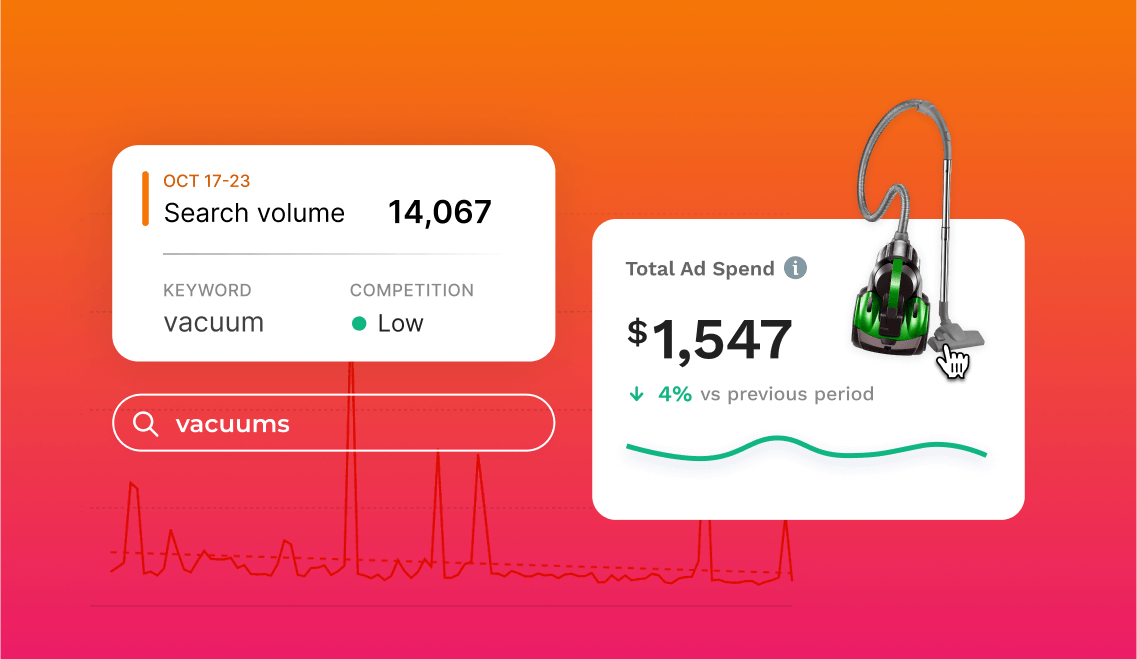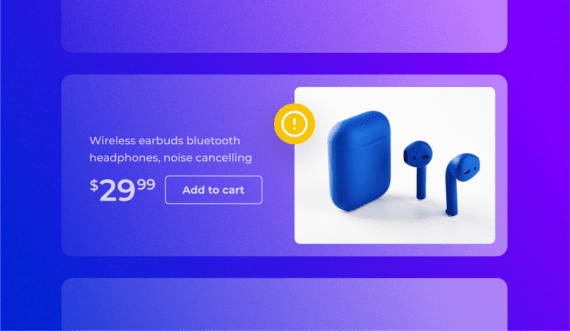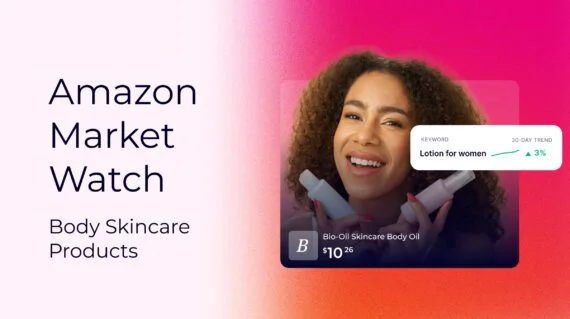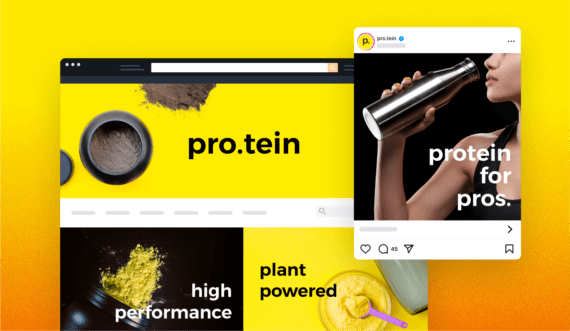Content
expand_moreAs a seller, every dollar spent on an ad must work hard. Amazon’s pay-per-click (PPC) model is built to give you total control of your ad spend, shooting at high-intent shoppers right when they are primed to purchase.
So, this isn’t just about increasing visibility; it’s about maximizing your return on investment (ROI).
But managing PPC campaigns doesn’t end with setting a budget and picking a few keywords. It’s about refining your bids, tracking performance, and determining which ads boost sales. In return, you get a well-managed ad strategy that gets your products in front of ready buyers, making every click count.
Below, you’ll get an in-depth guide to Amazon PPC campaign management: what it is, how it works, and some of our top tips to help you set up your ad campaigns for success.
What is Amazon PPC?
Amazon PPC is a model Amazon offers sellers to boost product sales online. It allows them to create ad campaigns for their products and charges them every time a potential customer clicks and views their ad.
Amazon PPC advertising is crucial for established Amazon businesses or sellers because it helps maintain visibility in a competitive marketplace, drive more traffic to their listings, and places products in the right spots for potential buyers.
Understanding fundamental Amazon ad types
Small businesses that advertise on Amazon see a 26% increase in sales — so this isn’t an avenue to ignore! Below, we’ll look at the types of Amazon PPC ads available and how they work to help you reach your target audience.
Sponsored Products: The foundation of Amazon PPC
Sponsored Products ads are the most common type of Amazon ads. They appear in highly visible spots, like the top of search results and product listing pages, and can closely resemble organic listings. These placings increase product visibility and the chances of attracting customers. 
Who can use Sponsored Products?
- Vendors or first-party partners: Companies that sell items directly to Amazon, and Amazon sells them on its website.
- Sellers: Those with an active Amazon Professional Selling account. They sell products directly to customers.
- Book vendors: Authors and publishers who wish to sell books on Amazon.
- Kindle Direct Publishing (KDP) Authors: Independent authors publishing ebooks via KDP who want to increase visibility for their titles.
- Advertising agencies: Agencies managing Amazon accounts for clients can also create and manage Sponsored Product campaigns.
Sponsored Products ads are perfect for launching new items as they help drive initial visibility and traffic. You can also use them to boost already successful Amazon products, keeping them competitive.
Requirements for Amazon Sponsored Products ads
- You do not need to be brand-registered to advertise, but you must have a professional Amazon seller account or be a vendor. You can’t promote products with an individual seller account.
- Your product must be Buy Box eligible to qualify.
However, not all products are eligible for this type of ad. Restricting products and services ensures that the ads displayed are of high-quality products that enhance customer experiences. Products cannot be:
- Used or refurbished items
- Adult products, including escort services, adult dating, or intimacy toys.
- In closed or gated categories (those that require special approval from Amazon before you can list).
Sponsored Brands: Building brand awareness
Formerly known as “headline search ads,” Sponsored Brand ads allow sellers to drive awareness to more than one product or service at a time, highlighting the brand as a whole. They use more robust visuals than Sponsored Products to catch shoppers’ eyes.
With Sponsored Brands ads, you have three formats for displaying your products: at the top of Amazon search results, as headline banners, or further down the page as a video. 
Products that can’t be advertised include:
- Used items
- Refurbished items
- Adult products
When are Sponsored Brand ads most effective?
- During a product launch or promotion campaign for a new product line to help establish brand identity by ensuring that shoppers connect it to your brand name.
- Driving traffic during promotions or sales events, allowing shoppers to explore your entire product catalog.
Further, Sponsored Brand ads offer you more creative control. Typically, you include your brand’s logo, a custom tagline, and two or more products. For the “video” format, you include a 15–30-second long video ad showcasing a product.
Sponsored Brands also offer higher visibility by allowing you to showcase multiple products and give shoppers a sense of your brand’s offerings. This makes this type of Amazon ad an excellent tool for enhancing brand presence on the platform.
Sponsored Display ads: Reaching audiences across the web
Sponsored Display ads don’t use keywords. Instead, they rely on automation to advertise items. You target customers based on customers’ shopping activities — like their product browsing history or past purchases.
For example, if a customer views a pair of hiking boots on Amazon but doesn’t buy them, you can retarget them with Sponsored Display ads. Seeing ads that remind them about the product they looked at may be the nudge they need to convert into a sale.
Unlike other ads, Sponsored Display ads appear on and off Amazon. They may appear on websites like Netflix, Facebook, Google, and even mobile applications.
Amazon is also working on a new opportunity: Sponsored TV. This product — still partially in beta — helps your brand connect with the right viewers by displaying ads on streaming services like Twitch and Freevee.
How does PPC work for Amazon?
1. Sellers select keywords relevant to their products.
Here are two keyword targeting strategies to use: automatic targeting and manual targeting. Let’s briefly explore their differences:
- Automatic targeting: Involves using Amazon’s algorithm to target keywords related to your product listing.
- Manual targeting: Hand-picking the keywords you wish to bid on. Your ads only appear when your keywords match a shopper’s search terms.
2. Sellers bid on specific keywords, deciding how much they’re willing to spend when a shopper clicks their ad.
3. The highest bidder, combined with ad relevance, wins the bid. They get the best ad placements on product pages, search results, or other prominent locations.
4. Every time a shopper clicks on the ad, the seller pays Amazon a small fee (cost-per-click) for that interaction.
5. You track the ad’s performance with metrics like impressions, click-through rates (CTR), sales, and the advertising cost of sales (also known as ACoS).
Challenges that sellers often face with Amazon PPC management
Managing PPC can be challenging, especially for small businesses that must balance building a brand and staying competitive. Let’s explore PPC management struggles businesses face include:
Wasted ad spend
One of the biggest hurdles sellers face is wasted ad spend: when you overspend on irrelevant keywords, mismanage your bids, or skip keyword targeting.
To gauge your PPC campaigns, tracking your ACoS (the percentage of sales spent on advertising) is necessary.
Here is how to calculate ACoS:
ACoS = (total ad spend / total sales) x 100
Suppose you spent $50 on Amazon ads and generated $200 in sales. Your ACoS will be: (50/200)*100 = 25%. A lower ACoS means higher profitability, but the ideal number depends on your PPC campaign goals.
To avoid wasting ad spend on irrelevant queries, add negative keywords. This way, your ads will only appear for searches that fit your product well. For instance, if you’re selling hiking boots, adding “cheap” as a negative keyword prevents your ad from showing when shoppers search for “cheap hiking boots.” This way, you can focus on more relevant traffic and increase your chances of capturing conversions.
Poor keyword targeting
With ineffective keyword targeting, your ads aren’t shown at all or are displayed where your audience isn’t looking.
The good news is your Amazon keyword research doesn’t have to be complicated. Jungle Scout’s keyword research tool, Keyword Scout, can help you identify relevant, high-converting keywords that match buyer intent.
Keyword Scout enhances your targeting by showing exact keyword search volumes — the number of times a keyword has been searched for within a particular period.
Ineffective budget management
Your budget also significantly impacts the effectiveness of your PPC campaigns. If you’re having trouble with budget allocation, you’re either underspending or overspending.
Underspending means underfunding high-performing ads and missing out on opportunities to convert. Conversely, overfunding means wasting money on irrelevant clicks, sometimes running out of daily budget early, and limiting the number of times your ad is shown.
Therefore, balance your budget across different campaigns to get a good return on your ad spend (RoAS) on Amazon.
Campaign monitoring
Monitoring PPC campaigns is imperative for determining what’s working. You need to track performance to avoid missing keyword shifts, trends, or price adjustments to help you win bids.
Regularly check your campaign metrics (CTR, RoAS, ACoS, and total sales) and adjust keywords, bids, and targeting as needed. Consider A/B testing in your campaigns to see which ads perform best.
A/B testing involves running PPC ads with different features — images, keywords, or headlines — to see which performs better. You might pick two ads with the same product but different keyword targeting. After running them for some time, compare the results and use this information to optimize future campaigns.
Inconsistent bidding strategies
If you’re erratically or inconsistently bidding, you might waste ad spend, overpay for particular clicks, or lose visibility. To avoid this, set clear bid management strategies based on what you want your campaign to achieve. Remember to monitor ad performance and adjust to improve your PPC campaigns.
How Amazon PPC management helps with advertising
Managing your Amazon PPC campaigns can make all the difference if you want to stay on top of your advertising game. Here’s how:
Provides data to optimize campaigns
Data drives smarter decisions, especially in PPC management. When you depend on actual performance data, you know what to skip and keep doing in your campaigns.
Jungle Scout’s Amazon Intelligence tools provide insights into keyword performance and sales trends, helping you adjust your campaigns accordingly. The Keyword Research tool finds quality keywords that drive the most traffic for your competitors to help you optimize your ads. You also see your keyword performance with data like search volume, ad tracking, and PPC costs. These insights help you budget for your campaigns and avoid ineffective strategies that drain your wallet. 
Leverages automation for greater efficiency
Years ago, sellers had to request reviews manually on Seller Central. Today, you can use Review Automation to send out review requests linked to your orders. You can also choose which orders get a request and monitor the status of your requests.
Automation streamlines PPC campaigns and frees up more time to focus on bigger-picture strategies, like expanding your product line or enhancing your marketing strategies.
Boosts your competitive edge
Brands that manage their Amazon PPC stand out in the Amazon marketplace. They can survive competition thanks to the intelligence features of the best Amazon PPC software.
You can track your competitors’ ads with Jungle Scout’s Competitive Intelligence tool to spot gaps in their strategies and adjust your PPC campaigns to take advantage. So, you’re not just bidding on random keywords — you’re making strategic moves based on real competitor data. 
5 effective Amazon PPC management strategies to try
Amazon PPC ads management doesn’t have to be stressful. Whether your focus is on Amazon SEO or broader Amazon digital marketing tactics, these five tactics will enhance your PPC campaigns:
1. Use automatic and manual campaigns together
Combine automatic and manual campaigns to boost your PPC performance. Automated campaigns collect keyword data effectively, helping you uncover keywords you may never have considered.
With more keyword data, you can use manual campaigns for more precise targeting — it’s more effective and reduces ad spend. This combined automatic and manual approach captures specific and broad traffic, giving your listings more exposure.
2. Adjust bids based on performance data
PPC management isn’t a one-time task — it demands regular monitoring and bid tweaking based on your ads’ performance.
Here are a few essential Amazon PPC metrics to keep an eye on, and how to calculate them:
- Conversion rates (CR): How many people buy your product after clicking on your ad?
CR = total number of orders / total number of clicks
- Click-through rates (CTR): The ratio of clicks to impressions (The number of times an ad appears on a page, regardless of whether people click on it).
CTR = (clicks / impressions) x 100
- Cost per click (CPC): The amount you spend each time a customer clicks on your ad. CPC helps prevent overspending on bids, particularly when operating within a limited budget.
CPC = total ad spend / total clicks
- Advertising cost of sales (ACoS): The ratio of advertising expenditure to revenue generated from ads. Essentially, it indicates how much you spend on advertising for every dollar made from an ad.
ACoS = (total ad spend / total sales) x 100
Jungle Scout’s Advertising Analytics tool tracks financial metrics, such as impressions, clicks, ad and organic sales, top products by ad sales, and ACoS, making it easier to assess your performance.
3. Segment campaigns by product category
To enhance your campaign strategy, tailor bids and budgets to each product’s performance. For instance, allocate a higher budget to top-selling products while keeping lower bids on new items as they need time to gain traction.
Creating separate campaigns allows you to balance your budget and improve your PPC campaign’s overall performance.
4. Research more long-tail keywords
Use long-tail keywords to build a competitive advantage — the more specific your keywords are, the lower the competition.
These keywords can also lower your cost per click (CPC) and boost conversion rates (CR) since they target shoppers with specific buying intentions.
5. Leverage dynamic bidding options
Amazon offers three types of campaign-bidding strategies for automatic targeting ads:
- Down only: Amazon lowers bids in real time when you’re less likely to make a sale. This option works well in slower shopping periods, like the first few months of the year, as it prevents your ad from appearing on irrelevant product searches.
- Up and down: This option adjusts your bids up and down based on conversion likelihood. Use these bids during busy shopping periods like Prime Day.
- Fixed bids: Your set bid doesn’t change unless you adjust it.
*Tooltip: We recommend up and down bids to maximize your chances of earning Amazon sales!
Transform your PPC results with Jungle Scout’s robust solutions
Effective Amazon PPC campaigns are all about balancing data-driven decision-making and strategic adjustments based on what works — and what doesn’t. As a seller, you need to find high-quality target keywords, bid consistently, and tweak your bids to maintain momentum on Amazon.
Jungle Scout’s Competitive Intelligence can ease this process and help you run successful PPC campaigns. With the keyword research feature, you discover your competitors’ revenue-driving keywords and leverage them in your listings and ad campaigns. Better still, you get a comprehensive view of how your competition stacks up by star ratings, reviews, units sold, and revenue to see where you stand against them and adjust on the fly.









